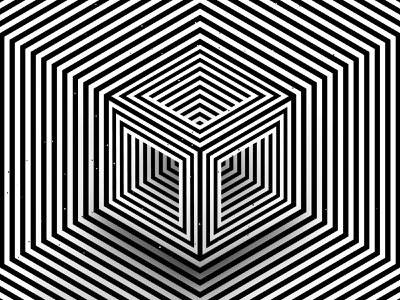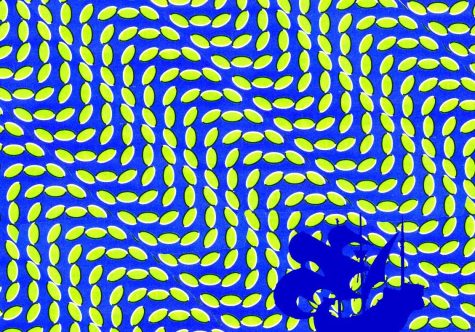The Psychology Behind Optical Illusions
April 17, 2023
If you see something moving, it really isn’t. It is just your brain being confused by what your eyes tell it. When this happens, it is called an optical illusion. Optical illusions can use many things we see every day like color, light and patterns to create images that can be deceptive or misleading to our brains. Information that was gathered by the eye is processed by the brain, and in your head you create an perception that does not match the reality.
Here’s an example: take a look at this image and move your eyes across the pattern:. Do you see the wave?
There are three main types, including literal, physiological, and cognitive optical illusions. A literal illusion is when the image you are looking at is different from the images that make it up. For example, you have most likely seen the image below before, and was asked if you saw either an old or young woman. The illustration is two images that were drawn strategically to look like one fluid image. In the end, what you see is based on your perception because both images exist.

 The second type of illusion is physiological, which are more complex because they rely on over stimulation of the brain’s senses. Your eyes pick up details of light, movement, color, dimension and size, and when your brain essentially goes on overload, it gets confused and these images may look different than they actually are. It sometimes takes your brain some time and investigating to truly depict the image. Minder benders like geometric illusions and impossible pictures are known as physiological illusions.
The second type of illusion is physiological, which are more complex because they rely on over stimulation of the brain’s senses. Your eyes pick up details of light, movement, color, dimension and size, and when your brain essentially goes on overload, it gets confused and these images may look different than they actually are. It sometimes takes your brain some time and investigating to truly depict the image. Minder benders like geometric illusions and impossible pictures are known as physiological illusions.
The final type of illusion is cognitive, which has received the most attention from scientists and psychologists because it is the trick that the eye can pull on the brain that is most intricate. These illusions, as opposed to other kinds of optical illusions, rely on how we  relate one object to another and what our subconscious minds think. It’s thought that what you see can shed light on the depths of your thoughts. It reveals inferences and understandings your brain has regarding something that has not been explained.
relate one object to another and what our subconscious minds think. It’s thought that what you see can shed light on the depths of your thoughts. It reveals inferences and understandings your brain has regarding something that has not been explained.
Did you know that approximately 5% of people cannot see optical illusions? Are you one of them?












